READY TO GET STARTED?
REQUEST A FREE ESTIMATE
Fill out the form below or call (888) 466-7849 for a free, no-obligation estimate.
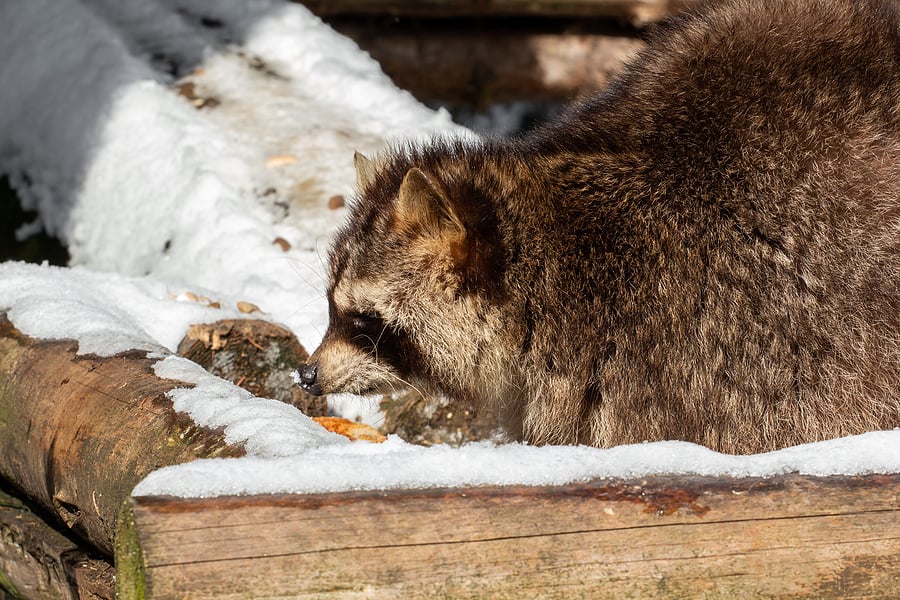
When cold weather hits, winter wildlife go in search of three things: food for their bellies, water to quench their thirst, and warm shelter to keep them safe. When the going gets tough, these winter pests have to get creative in order to survive – often by making their way into your attic, chimney, basement, or crawlspace. While it’s beneficial for them, it can cause serious damage to both your home and your health to have them sharing space with you.
How do you know if you have a stowaway for the winter? Common signs of wildlife include:
Now that you know what to look for, what kinds of animals can cause these signs? Some of the most common winter wildlife include:
Prevention is key to avoiding a winter wildlife invasion. Critter control starts at home with these winter wildlife prevention tips:
Chimneys provide a great hideout and also a gateway for wildlife to get into your home. Make sure the top of your chimney has a grated screen that is in good repair with no holes. Check above the flue panel for any leaves, debris, droppings, or animals before sealing it up. Make sure your chimney is secure.
Small holes, cracks, open pipes, etc. in your foundation provide easy routes for wildlife to get into your home. A careful inspection of your foundations should be performed every season throughout the year. Seal any openings as you find them.
Any tiny cracks or openings in your roof or siding means easy access to your attic. Check the entire exterior of the roof, starting with the intersections and siding. Make sure to also check the flushing seams on the roof. Siding that connects to the roof should not be warped or pulled away. Be sure to check around exhaust openings and for loose vent screens, as well.
Many wildlife critters love to hide out in the attic. Use a flashlight or headlamp and thoroughly inspect this space, checking for openings or chewed up or damaged areas of wood. Seal any holes you find but always make sure the animals are not still present before you do.
Your trashcans offer a buffet of food sources for pests. Use cans with tightly securing lids, avoid overfilling them, and wash the bins regularly to get rid of food waste.
Branches and limbs offer squirrels, raccoons, and other creatures a bridge directly into your home. Keep trees and shrubs trimmed away from the house. Prune shrubs to keep them at least 12″ from the sides of your home. Trim any branches that overhang or touch your roof, as well.
Leaving food sources outside your home will just attract wildlife in. Try to avoid leaving pet food outside and tossing scraps or pouring leftover grease in the yard. Pick up any fallen fruit. Protect your gardens with fences that are designed to keep animals out. Clean up any spilled birdseed from feeders and bring them in overnight.
Wildlife control is an ongoing process that needs special attention and consideration, especially in the cold winter months. If you have a problem with winter wildlife, contact your local pest control company for an inspection and appropriate treatment or wildlife exclusion plan.
4 Pests That Are Closer Than You Think!
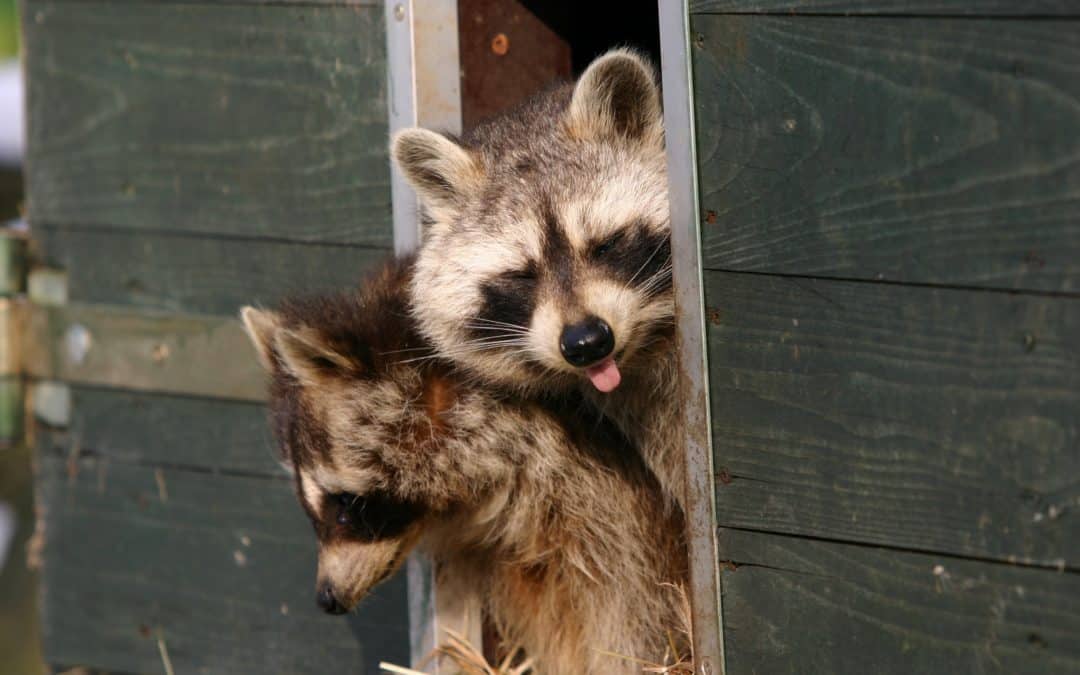
The temperatures have dropped, the warm heat is running throughout the house, and we are all bundled up under a blanket come nightfall. While we enjoy the indoor warmth, the creatures outside could be a bit envious. Most wildlife animals are looking for shelter to keep them warm and provide them with a food source. We breakdown some common wildlife that roam about during the colder months and why they can be harmful to your home and family.
Norway Rats
One common pest encountered in the fall and winter is the Norway rat. These rodents are most active at night, when they begin their search for food and water. They exist in large numbers and are known to produce up to 5 litters per year with an average of 7 babies per litter! If given the opportunity, Norway rats will enter through open holes and gaps leading inside your home. If they gain access, they can be dangerous as they will chew electrical wires, putting you at risk of house fires.
Raccoons
While raccoons can look cute to some, having them destroy your property is not ideal for any homeowner. These animals are talented, capable of using their paws to open doors and lids. They often live in hollowed trees or caves but can also sneak inside the attic and garage to find warmth and food. Once these pests find a food source, they will keep returning to search for more. This can be not only dangerous, as there is potential they could have rabies, but it is also a nuisance as they can cause considerable damage to your roof or inside the home.
Squirrels
Squirrels spend most of their time in trees foraging for food. While these animals might look harmless, they can easily become a threat if they find themselves inside your home. These pests are looking for a food source and will commonly invade bird feeders, garbage cans, and attics. If access is gained into your attic, squirrels can cause damage to the wood, insulation, wires, and even storage boxes. Their urine and droppings can also contaminate attic insulation, which can be extremely costly to replace.
If you suspect that one or more of these wildlife creatures have gotten inside your home, it’s best to contact your local wildlife control company. A professional will be able to locate any entry points, create a customized plan, and prevent them from returning in the future.
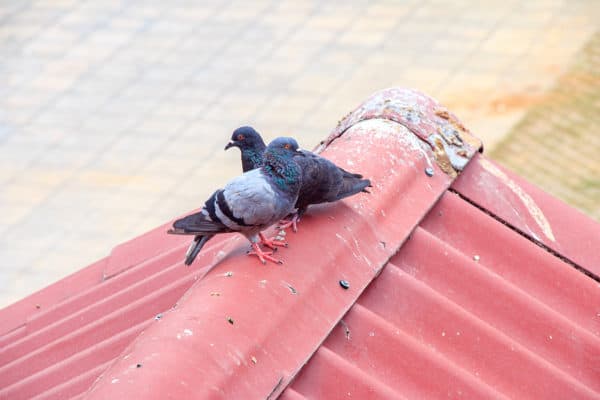
Some birds are beautiful and fun to watch, while others can be downright annoying and destructive. While birds aren’t typically considered a nuisance pest, they can become a problem when their nests obstruct important areas in your house, their droppings carry transmittable diseases, or they get into your attic or chimney.
Understanding what nuisance birds are attracted to is the first step in helping to prevent them. Pest birds such as crows, pigeons, sparrows, robins, and starlings are attracted to food sources they can find around your home (insects, earthworms, corn, seeds, and rotten fruits and vegetables). Woodpeckers are also a common nuisance bird and will drill into your trees in search of carpenter ants, beetles, and other wood-boring insects.
Birds can be attracted to pet food which is often left outside all day for them to feast on. Birds also require water to survive and will use your fountain, water feature, or any other standing water on your property as a birdbath.
While professional bird control is always an option, there are some bird prevention tips you can use at home to help keep birds away. Here are 5 of our favourite DIY bird-repellent methods.
If there isn’t anything in your yard to attract birds, they will be less likely to hang around.
Most birds require freshwater to survive. Substitute saltwater for freshwater in your fountains and water features so birds won’t be able to drink from them. If you feed your pets outdoors, remove or cover their food and water dishes as soon as they’re done with them. Make sure pet food is kept in airtight containers.
Birds also like to take cover in grass and other landscaping, especially in windy or stormy conditions.
Make sure grass is kept mowed, and hedges and trees are kept trimmed to help reduce cover. If you see a bird actively building a nest, use a long stick to dismantle it. Once you do this a few times, the bird will move on to a new nesting site.
If the nest is already built or occupied by the bird, don’t attempt bird nest removal yourself. There are laws in each state regulating the removal of bird nests. Contact a professional wildlife exclusion company to help properly remove or relocate the bird’s nest in question.
One of the easiest and cheapest natural bird repellents is aluminum foil. There are several different ways you can use aluminum foil to keep birds away. If birds are disturbing your garden, you can place strips of aluminum foil under the surface of the dirt or around any plants they are bothering. Birds don’t like the feel of the foil under their beaks and will stay away.
You can also hang strips of aluminum foil (or shiny party streamers) from the trees or other high points around your home and garden. The sun reflects off the shiny surface and bothers their eyes, deterring them from coming near. If woodpeckers are around, hang an aluminum pie plate on the tree where you see them most often. The reflection of the plate will scare the woodpeckers off.
If birds are constantly landing in or near your pool, try running fishing wire high over the pool in a criss-cross pattern. You can hang it between 2 trees, between eaves, or from any other high locations you might have near your pool. The birds don’t like the impediment to their flying space and will find somewhere else to land. As a bonus – you won’t be able to see the clear fishing wire from the ground so it doesn’t take away from the aesthetics of your backyard space.
If pigeons and other nuisance birds are invading your patio space or window sills, try sprinkling baking soda anywhere they like to perch. Birds don’t like the feel of the baking soda under their toes and will avoid it at all costs. You can also use double-sided duct tape instead of baking soda.
If birds are a problem around your garden, pool, or deck, you can purchase one (or several) predator decoys at your local hardware store to scare them away. As the birds fly overhead, they will see the plastic owl, rubber snake, or whichever other decoy you choose and won’t land near it. Just make sure you move your decoys around often or the birds will get used to them and realize they aren’t real.
The more deterrents you have around your property, the less likely you are to have birds hanging around. If these methods don’t work or you already have an existing bird issue, contact a professional bird control company who can help you safely and effectively remove the nuisance birds and put measures in place to prevent them from coming back in the future.
How to Avoid a Rat Invasion During a Pandemic
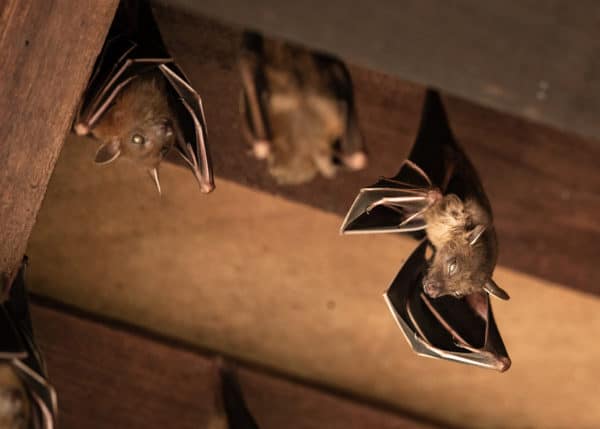
Nuisance wildlife is defined as any type of wild animal that invades a human habitat. This can include squirrels, skunks, opossum, raccoons, moles, voles, groundhogs, birds, bats, snakes, rodents, and more. Anytime a pest gets into your home the potential for damage and contamination is significant. That’s why it’s important to deal with the issue as soon as possible.
There are different ways to handle nuisance pests when they find a way into your home. Extermination involves killing the nuisance pest through the use of traps, toxins, and poisons. While this is generally cheaper and more efficient, the chemicals used can be dangerous for humans, pets, and other non-nuisance wildlife. Wildlife control involves the selective removal of problem populations of certain species of wildlife and usually employs the use of live traps or professional trappers to catch and relocate the nuisance pests to a safer habitat away from humans. This method usually takes longer than extermination and is more expensive. Wildlife exclusion is usually performed as a part of either of these wildlife services and involves preventative measures such as sealing up entry points and habitat modification (which ensures unwanted pests can’t access your property or structures).
Animal control services can be provided by your local government and is usually free although it is often selective in what types of animals they will service. Services provided and cost varies by area and municipality.
A professional wildlife control company will often combine wildlife control, exclusion and/or extermination methods depending on the type of pest you have. Whenever possible, humane control methods such as live removal and relocation are the preferred method of treatment.
Wildlife services typically range from $150 to $500 with the average visit costing between $250 and $250, although it can cost upwards of $1000 depending on what type of pest is involved and how much damage has already been caused. Most wildlife control companies will charge a flat fee or a minimum service fee (usually between $150 and $250), although some will also charge an additional hourly fee per hour after the first hour of service (anywhere from $25/hour to $250/hour depending on the service). This is determined by the type of pest problem, where it is located in the house, and what services are required (removal, exclusion, cleanup, etc). Raccoons and squirrels are usually the most expensive pests to service with an average of $200 to $1500 for a visit depending on the size of the infestation and the amount of damage inflicted. DIY traps can cost anywhere from $50 to $350.
In addition to fees for wildlife control services, damages caused by these nuisance pests is an often overlooked cost that should factor in to the overall budget. The longer you wait to get rid of the pest, the more damage that can occur. Nuisance pests can damage walls, chew through electrical wiring putting you at risk for fires, destroy insulation, and contaminate your home and HVAC system. Repairs for these issues including insulation replacement, wiring repair, drywall repair, duct repair, crawlspace cleaning and repair, and siding repair can be quite expensive and the cost can escalate quickly.
If you have a wildlife issue, contact a professional wildlife control company. A professional technician can inspect your home to determine what type of animal you are dealing with, the extent of the problem and damage, and appropriate ways to treat it. They can also provide you with wildlife exclusion techniques to help prevent repeat issues in the future. Professionals also guarantee their methods and are trained in the proper handling of wildlife, as well as the newest methods and techniques.
Is Mosquito Control Needed In Winter?
Where Did These Ants Come From?
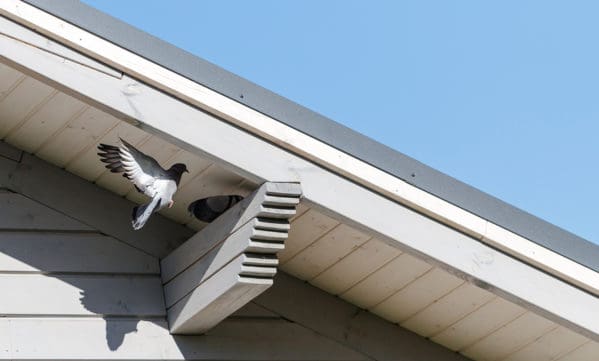
While most birds aren’t considered parasites, they can become quite a nuisance. Birds can be helpful in some ways: feeding on predator insects and eating the seeds of pesky weeds that can overtake your garden; but birds can also be pests by feeding on the fruits and veggies in your garden, causing damage to your home and other structures on your property, and leaving droppings that can lead to serious health risks to you and your family. Because it is illegal to kill most species of birds and remove or destroy the nests of other species, homeowners are only left with a few options when it comes to bird control: natural repellents that deter birds away from certain areas around your home and professional wildlife exclusion to safely and humanely remove or relocate nuisance birds. Here are five home remedies to keep birds away:
Shiny, reflective objects make great deterrents for problematic birds. The reflection of light off of these objects discourages birds from returning to these areas. These shiny objects, such as old CDs, aluminum cans, tin foil, small mirrors, or even metallic wrapping paper, can be hung near nesting or landing areas frequented by the problematic birds.
Birds have many natural predators including cats, owls, and larger birds of prey. Placing objects in the shape of these predators around areas frequented by nuisance birds can deter them from nesting or landing near them. These objects can be made of wood, metal, or any other material that can withstand the outdoor environment. Make sure to move these objects around every few days or the birds will get acclimated to them and begin to ignore them.
Round garden balls, which are large colorful balls that can be placed in your garden or hung from trees, fence posts, and stakes are a natural bird repellent. Birds will confuse these spherical orbs with eyes and try to avoid them. They also can be great decorations for your yard or garden.
Bird spikes are long, needle-like rods used for bird control. These spikes can be made of tin or plastic cans and placed in the dirt or attached with wire to window sills and overhangs. They can also be made by hammering nails into wood. Birds find these spikes uncomfortable and won’t land on them, keeping them away from problematic areas around your home.
There are several versions of bird repellent sprays you can make at home but the most popular is a concoction of chili peppers, water, and vinegar. To make this spray, crush dried red or green chili peppers into a mixture of water and vinegar. This mixture can either then be heated in a crock pot for a few hours to infuse or placed in a clear glass in the sunlight for a natural infusion. Once finished, place the repellent in a plant mister and spray any areas where birds are causing problems.
If you try these home remedies and you still have an issue with birds, your other option is to contact a professional pest control company who specializes in wildlife control who can come and thoroughly evaluate your home to help determine not only the species of bird you are dealing with, but also the best course of treatment that is both legal and effective.
New Year, New Termite Protection
6 Things You Should Know About Ants in the Kitchen